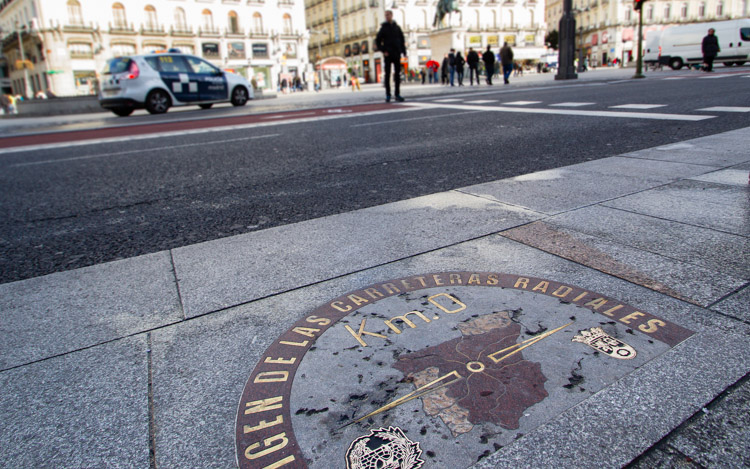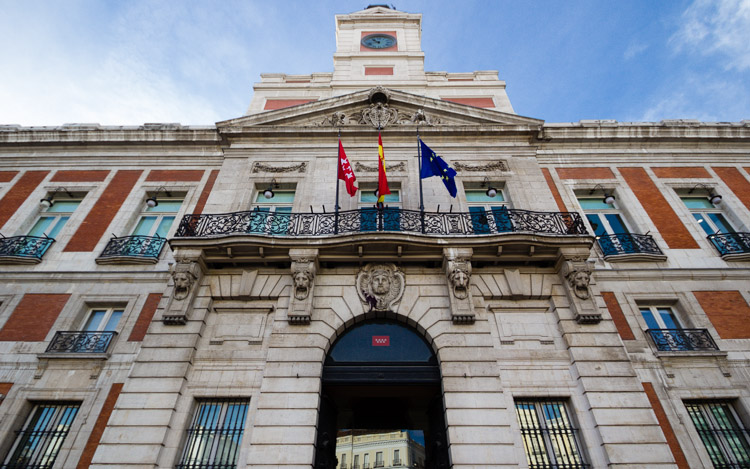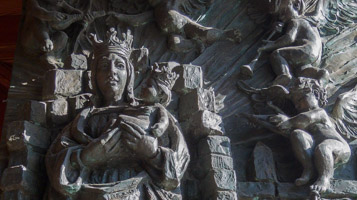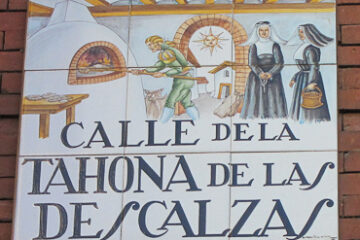Origin of the name ‘Puerta del Sol’
In Spanish, La Puerta del Sol means ‘The door of the sun’, but could be more freely translated as ‘The gateway to the sun’. Here’s the short history lesson… Over the years, Madrid has had various defensive ramparts, as well as a number of triumphal arches. These days, the Puerta del Sol is a public square, but used to be where the eastern entrance through the city wall was in the 16th century. So, being in the east, it was where Madrid’s first rays of sunshine appeared at the break of day. This is just one theory though! history in this case might be mixed with legend, you can read here another posible explanation for the origin of this name.
The statue of King Charles III
This statue of King Charles III (Carlos III, the illustrious) is one of him on horseback. He was the king who came from Naples and changed the face of Madrid. When he arrived in Spain to assume the throne, he complained about the dirtiness, the lack of public lighting, the unpaved streets and the lack of statues… He had a lot of complaints, in fact, and undertook vast improvements in the name of the Enlightenment. He’s known as the “best mayor of Madrid” and on the pedestal of the statue you can read about some of his works and famous ministers. He is also responsible for most of the things that you can see in the Prado Boulevard.
The Bear and the Strawberry Tree
The bear reaching up to grab fruit from the top of the strawberry tree has been on Madrid’s coat of arms ever since the 18th century. Before that it was just the bear, on all fours. Back then, there was a dispute between the Church and the local council, in which both claimed the pastures, hunting grounds and forests, all the way from Madrid to the Sierra de Guadarrama. The end result was that the Church took control of the pastures, while the forest and hunting grounds were to be owned by the council. To celebrate this victory, they added the tree to the coat of arms.
Kilometre Zero
The Kilómetro Cero was the starting point of the six main roads in Spain in the 18th century. Back then, those roads were very different! It’s also the starting reference point for the house numbers in Madrid. That is to say, that house number 1 on any given road in Madrid is always at the end nearest to the Puerta del Sol.

Casa de Correos and the Clock in the Puerta del Sol
The Casa de Correos (“The Post House”) is the HQ of the Community of Madrid, but its most known for its clock which dates back to 1866. This clock is used to ring in the New Year in Spain. On that date, at midnight, on each of the 12 chimes of the bell, people all over Spain pop a grape in their mouth and try to eat them all before the final chime. Prior to this clock, there was another as part of the Iglesia del Buen Suceso (whose remains can be seen underground in the train station)
It’s also infamous for its use during Franco’s dictatorship in Spain (1936-1975). This was the base of the Ministry of Security, and in its basements atrocities were committed on those held prisoner by the regime. (Read about Franco’s Valley of the Fallen).
Comercios Centenarios and symbols of Madrid
La Mayorquina: A comercio centenario (“century-year-old business”) that’s been stimulating Madrid’s taste buds since 1894. The delights on display in the window are bound to catch your eye. The founder of this shop was from the Balearic Islands and started out here selling all kinds of products from the islands (such as ensaimadas and sobrasada). Now they sell many kinds of cakes and pies and other pastries, for example in November Huesos de Santo (a kind of marzipan cake), and the staple of a Spanish Christmas meal, the Roscón de Reyes.
Casa de Diego: Another comercio centenario, this one dates back to 1858 and mainly sells fans and umbrellas of all types, made of fine woods, feather, mother-of-pearl and so on. They’re all hand-crafted in Valencia, and attract plenty of window-shoppers.
El Tío Pepe: this flashy advertising hoard atop a building in the square has been here since 1936, and has become something us Madrilians have become rather attached too. It’s considered an emblem of the city.
El Corte Inglés: Today it’s a massive department store, but it’s been on Preciados street since it started out as a modest tailor shop back in 1890.
10 streets that start at the Puerta del Sol
Us Madrilians have always got to pass through the Puerta del Sol for one reason or another. Ten streets start from here, forming a kind of star shape.






0 Comments